Jul 31, 2017
Zhou Meng: A Young Artist in the UK Captures the Rhythmic Soul with Dance Mastery
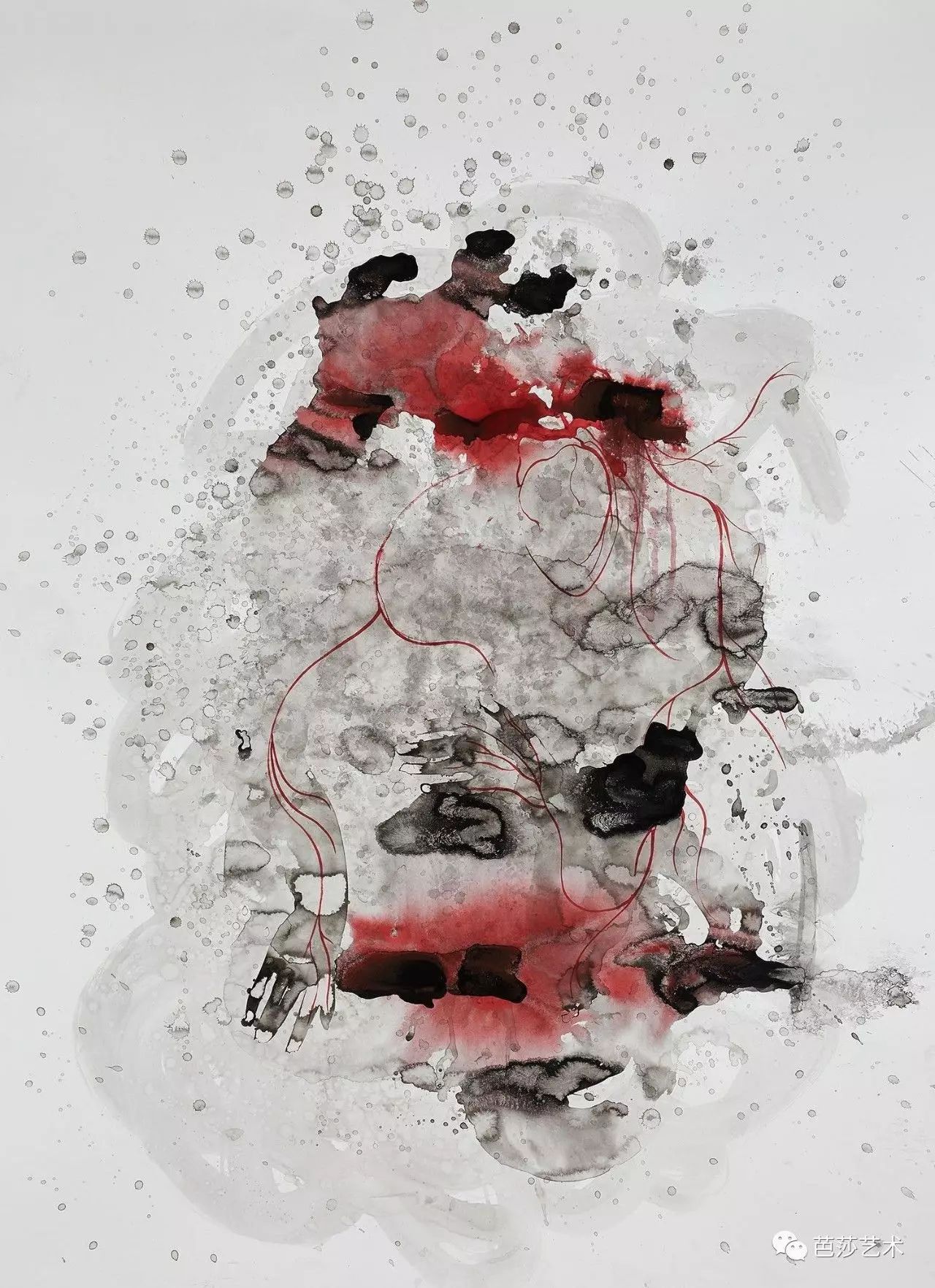
Zhou Meng "Anonym 10", 120×100cm, 2017
Artist Zhou Meng captures the movement of dance on paper,
blending imagined characters and spaces.
The scenes of reality and fantasy are no longer confined to two divided states;
he weakens societal influences and allows the characters in his works to freely "live" in a space full of uncertainty.
Dancing Bodies
Zhou Meng's works feature many extended limbs,
but the combination of multiple subjects and abstract elements
showcases the relationship between ink stains and extremely fine lines,
resembling clouds parting in the mist.
In seemingly dense backgrounds,
Zhou Meng always makes the bodies naturally become the center of the image,
allowing the work to breathe smoothly.
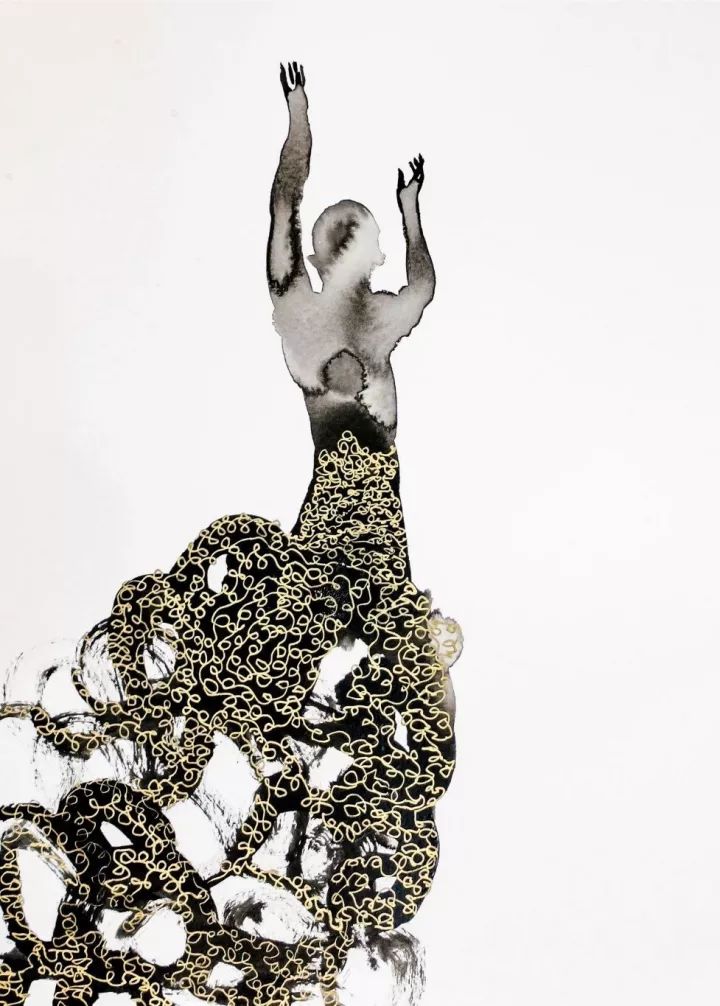
Zhou Meng "I2", paper, acrylic, 41×31cm, 2016
These bodily expressions often depict dancers in moments of movement,
stemming from his love for contemporary dance.
During his studies at the Royal College of Art and Camberwell College of Arts in London,
he frequently visited theaters alone to appreciate contemporary dance
and even traveled to Germany just to watch dances choreographed by Pina Bausch.
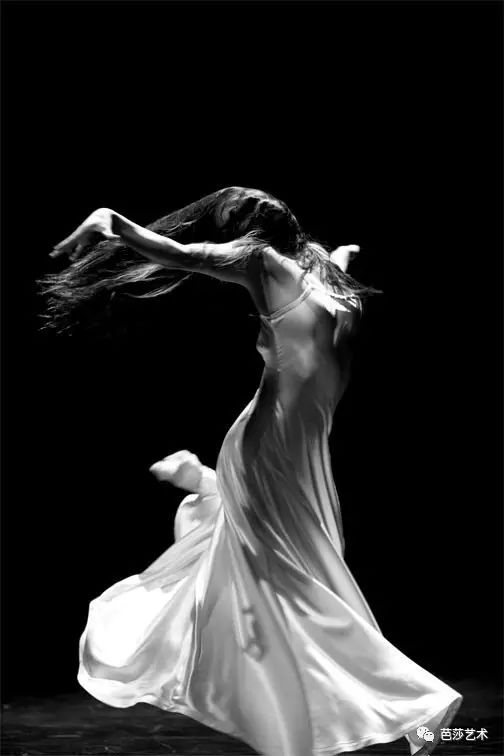
Pina Bausch
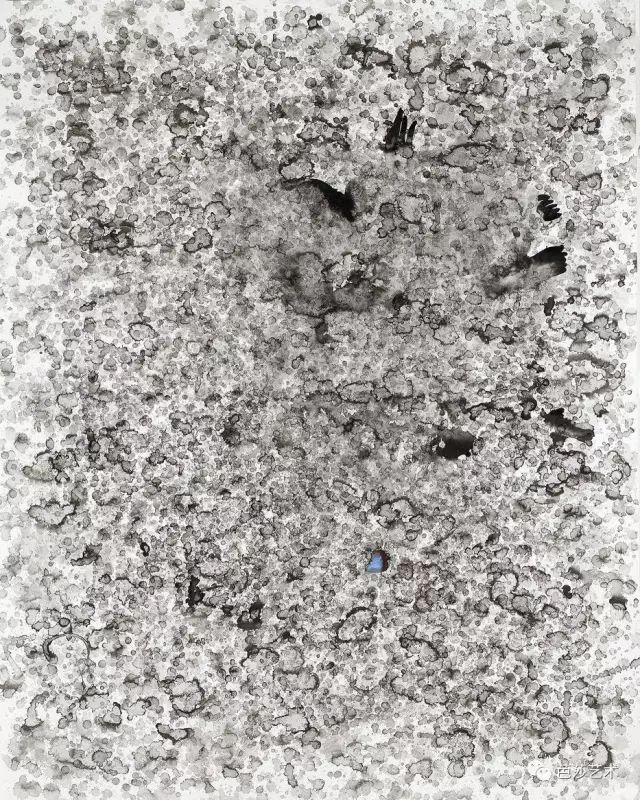
Zhou Meng "Anonym 7", paper, acrylic, 120×150cm, 2017
In his first year studying in the UK,
Zhou Meng followed the Pina Bausch dance company
to closely observe the movements and postures of contemporary dancers.
Dance movements are challenging to capture and even harder to record on paper due to the art's vibrant energy.
Zhou Meng's works do not interpret a single moment in a series of dance movements
but allow the dance to naturally tell a story,
with continuous movements leaping onto the paper.
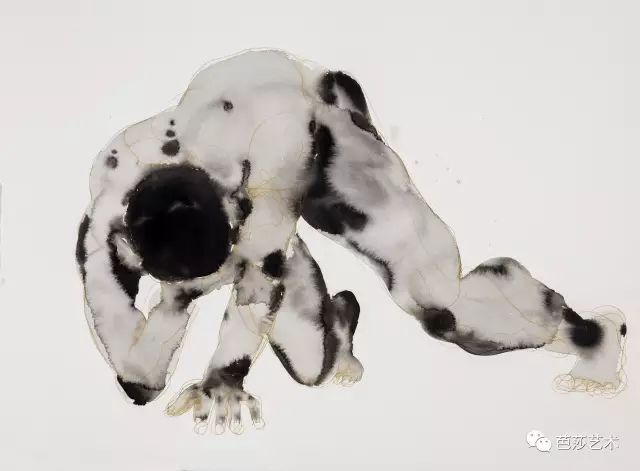
Zhou Meng "Regret", paper, acrylic, 76.2×55.9cm, 2015
Due to the rhythm of the body,
Zhou Meng observed that relaxed limbs interact with the natural environment,
returning to the most primitive state—the state of being born,
which he aims to express and continuously pursue.
The uncertainty of the background makes the characters in his works illusory,
completely unfettered, a fantasy unearthed from Zhou Meng's heart.
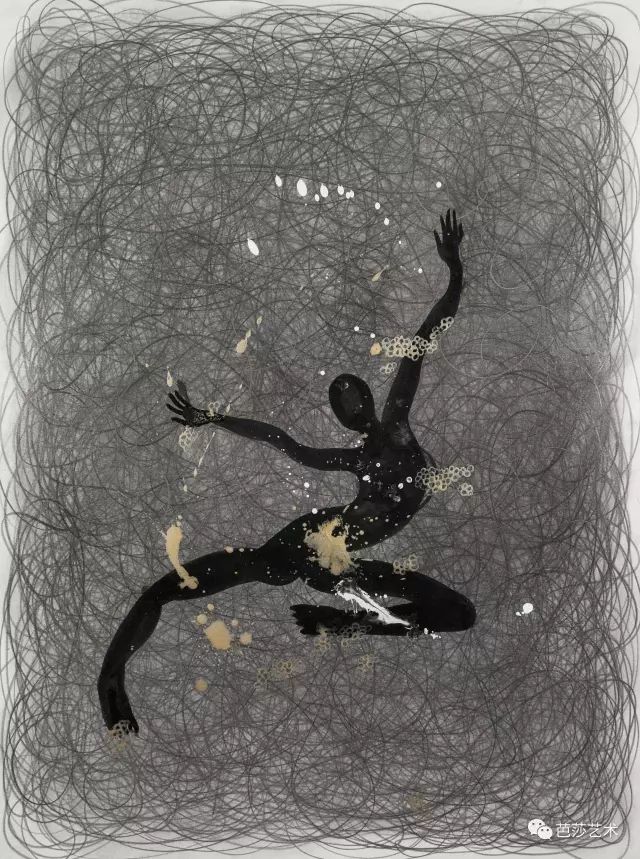
Zhou Meng "Anonym 3", mixed media, 32×57cm, 2017
Because his family works in medicine,
young Zhou Meng often saw images of complications from infectious diseases.
When he went to Pratt Institute in New York to study fashion alone,
these experiences related to the human body made Zhou Meng think about the importance of limbs.
He believes that when facial features are blurred,
the work finally returns to the body and the process of the most essential form.
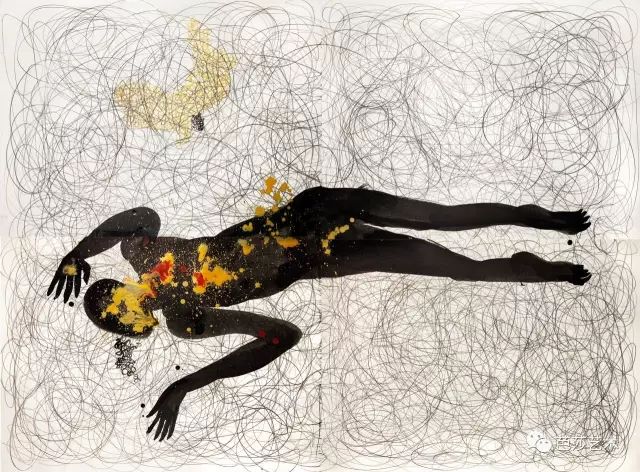
Zhou Meng "Anonym 2", mixed media, 120×100cm, 2017
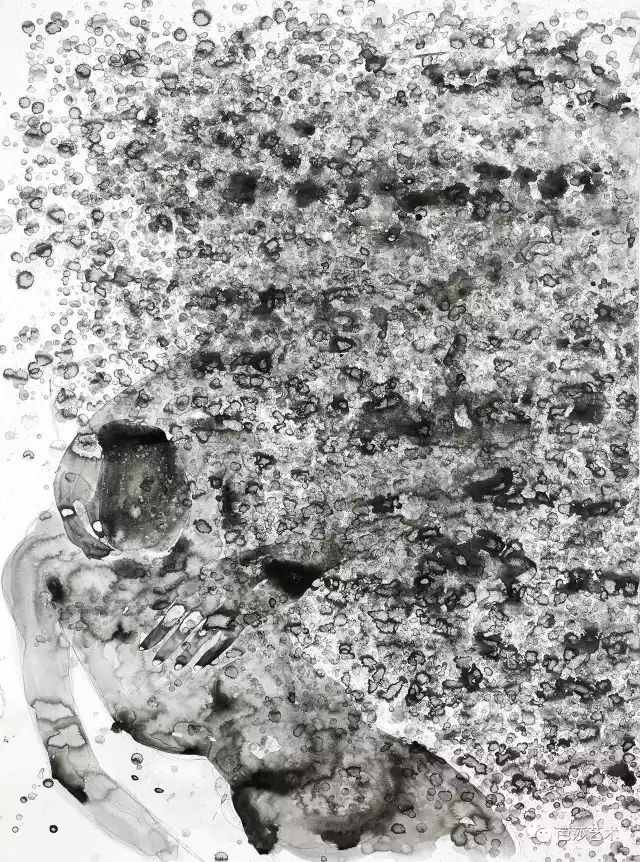
Zhou Meng "Anonym 5", paper, acrylic, 120×100cm, 2017
Sculpture master Giacometti believed that
when facial features are refined, people often ignore the body.
Hence, most of his works reduce the emphasis on facial features, showcasing an overall image.
Zhou Meng also seeks a sense of return in his works,
aligning perception and thought,
not just giving character images.
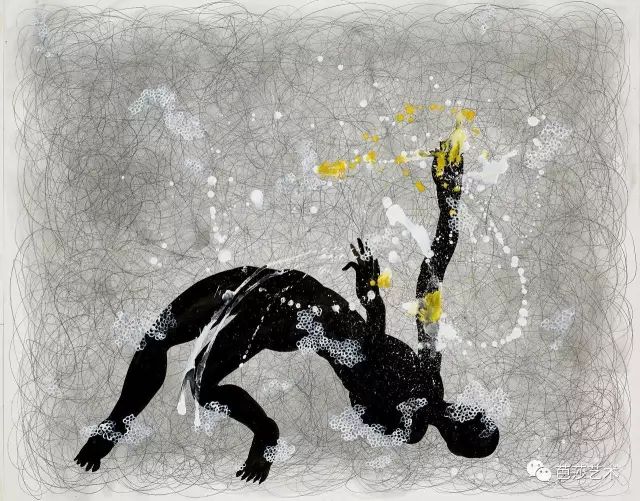
Zhou Meng "Anonym 1", mixed media, 150×120cm, 2017
The Right to Rotate
Zhou Meng does not like to limit media and materials to a single form
but prefers to create a form and concept that allows viewers to decide.
Everyone has the right to interpret the work,
and different perspectives will inspire various thoughts.
Therefore, Zhou Meng does not choose a specific background but places the work on a rotating device,
letting viewers decide the mode
in which they wish the work to be presented and the appropriate viewing method.
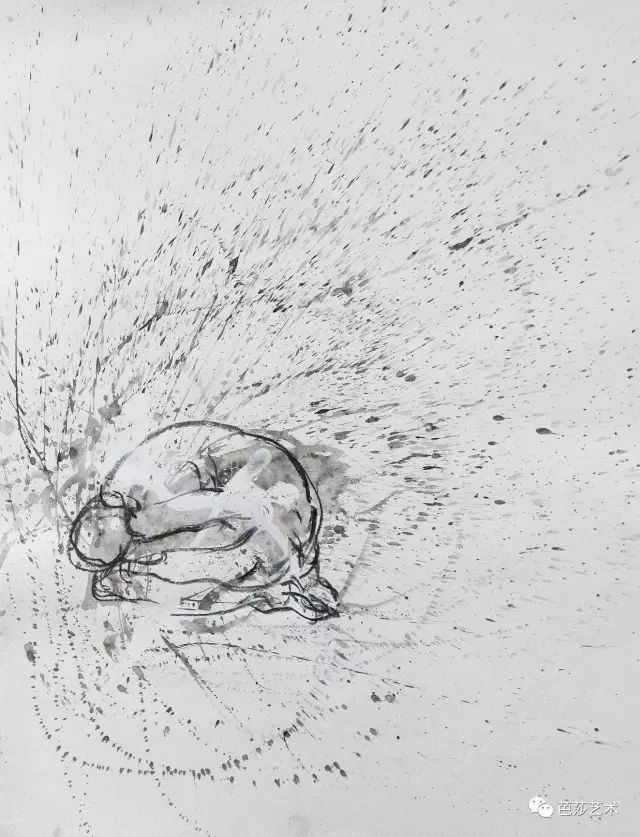
Zhou Meng "Anonym 17", mixed media, 120×100cm, 2017
When viewers rotate to different directions,
they have the right to appreciate,
making their understanding part of the work.
To some extent, due to the different viewing methods,
the viewers' choices complete the work.
This subtle interaction increases the various possibilities of the work's presentation.

Zhou Meng "Anonym 24", mixed media, 120×100cm, 2017
Not only can the on-site works rotate,
but the works on the website also provide viewers with the opportunity to rotate them personally.
Zhou Meng believes that
the background allows people to rethink and understand the impact of space on the work.
The rotation action creates a connection between the viewer and the work itself,
returning the decision-making power to the viewer.
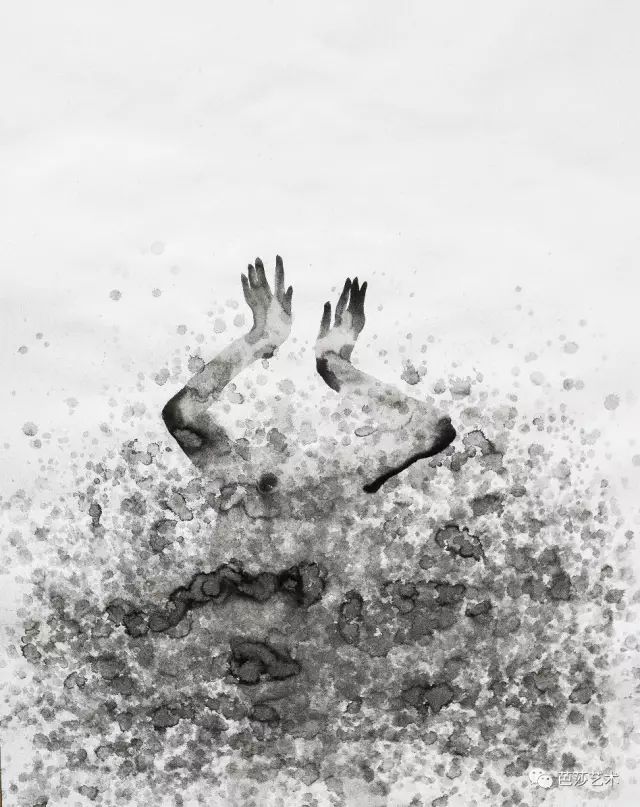
Zhou Meng "Anonym-0", paper, acrylic, 150×120cm, 2017
The rotation factor is not only reflected in the viewer's decision-making power
but also in his photography and video works.
Kaleidoscope-like short films and inverted films are all illusory spaces related to rotation.
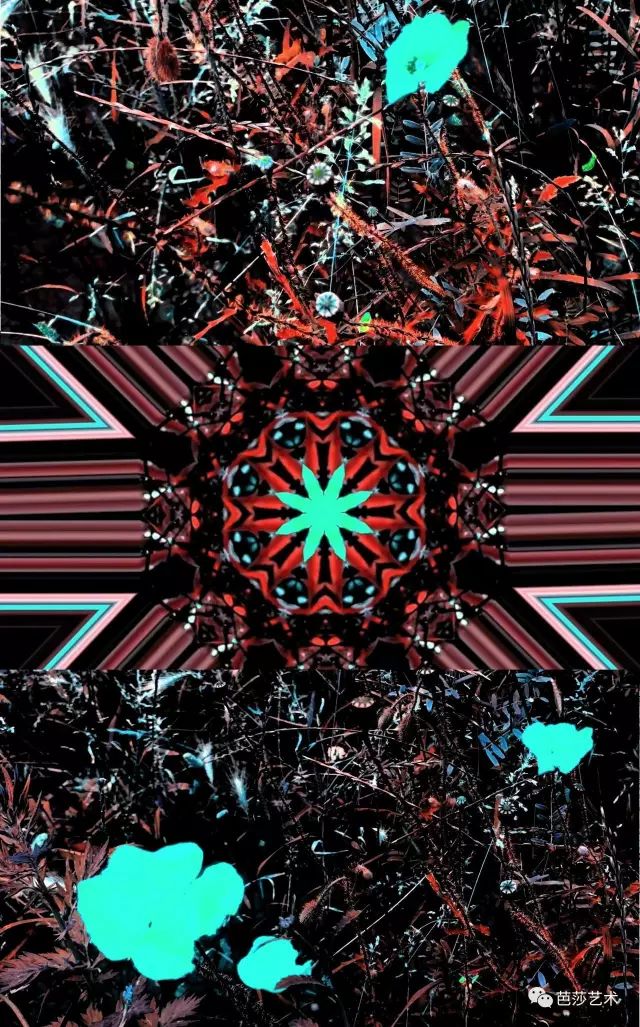
Zhou Meng "Overtone-Poppy", 2-minute 15-second video, 2017
Different Sensory Collisions
For Zhou Meng, cultural integration makes the world without boundaries and reduces many barriers.
He believes it is most important to paint romantic works with chemical substances.
His works constantly mobilize different senses,
searching for change and breaking the limitations of repetitive production.
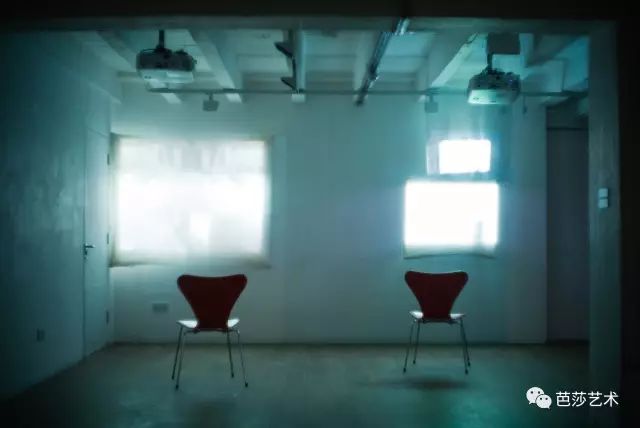
Zhou Meng "Walk In & Out", 2016
Recently, in a church in East London,
he completed a work combining sound and scent with images.
He connected scents, objects, and sounds with the audience's local memories, creating resonance.
Each sound group comes from unique sounds in East London,
corresponding to objects collected from local charity shops.
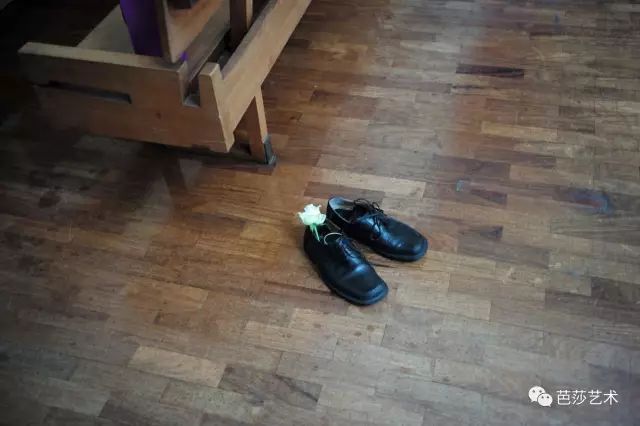
Zhou Meng "Overtone", installation, 2017
This work is named "Overtone,"
a kind of harmonic sound that normal people cannot hear,
only perceivable when highly focused.
The entire project is closely tied to the local community of East London,
showcasing the current state of local people.
The church, a place that integrates people from different backgrounds, reflects inclusiveness.
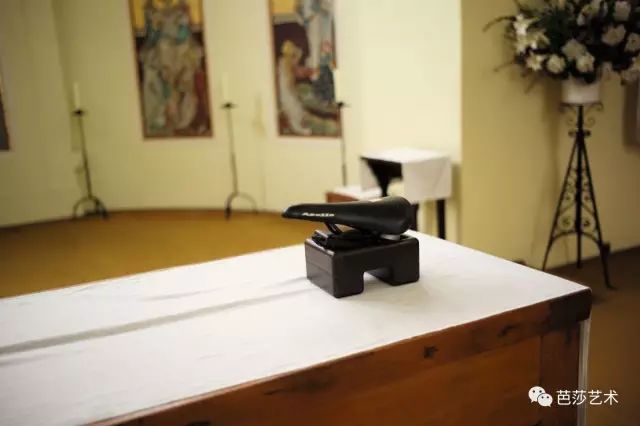
Zhou Meng "Overtone", installation, 2017
Zhou Meng found seven different historical objects,
all culturally valuable to the locals.
Each item contains a speaker, with sounds from different locals, such as a shouting woman.
The seven sound groups simultaneously emit in the church, combined with the internal echo,
making it difficult to distinguish single sounds or the difference between inside and outside the church.
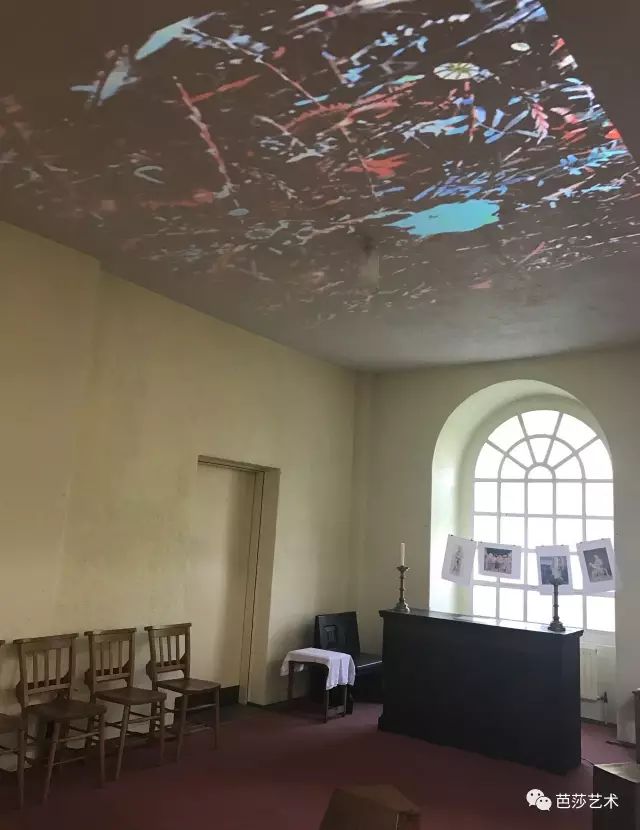
Zhou Meng "Overtone", installation, 2017
He allows everyone to share this memory and perception,
using scent to connect the viewer's private emotions and memories.
The entire work does not tell a specific detailed story but narrates fragments of life,
as these are part of East London's culture.
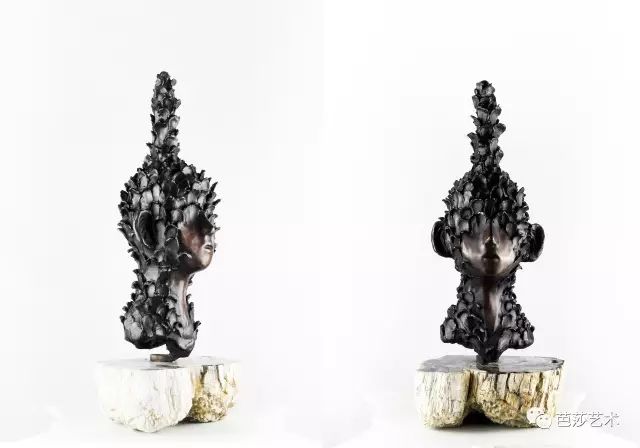
Zhou Meng "Silence", bronze, 45×21×16cm, 2015
Artist Zhou Meng and Harper’s Bazaar Art Department share insights,
exploring the relationship between body, perception, and works.
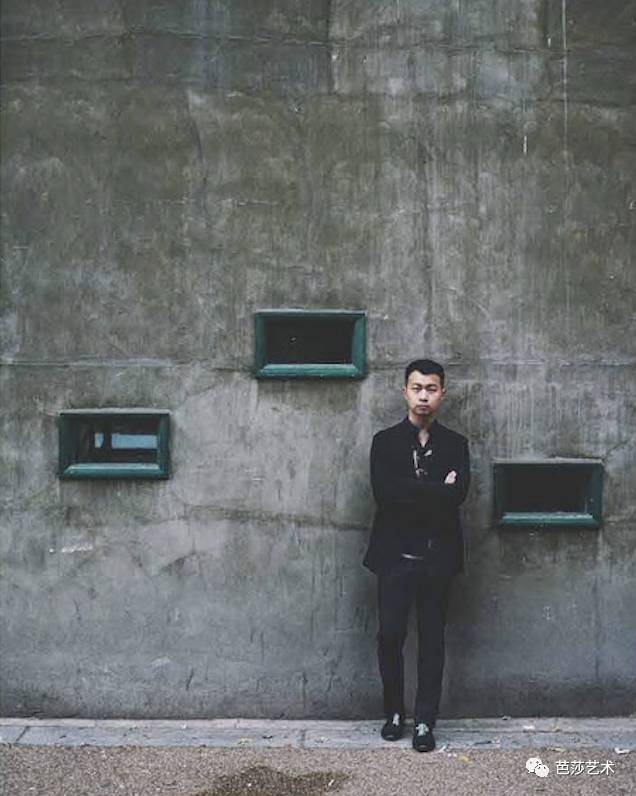
Bazaar: You mentioned the five senses as an important basis for creation.
How do you understand the five senses?
Can you explain in detail with your works?
Zhou Meng: I believe perception, as mentioned in Michel Serres' book "The Five Senses,"
is like an infinite weave of latitude and longitude,
an interdependent whole that cannot be split for individual assessment.
Sensory cognition is essentially characterized by the body,
carrying personal experiences.
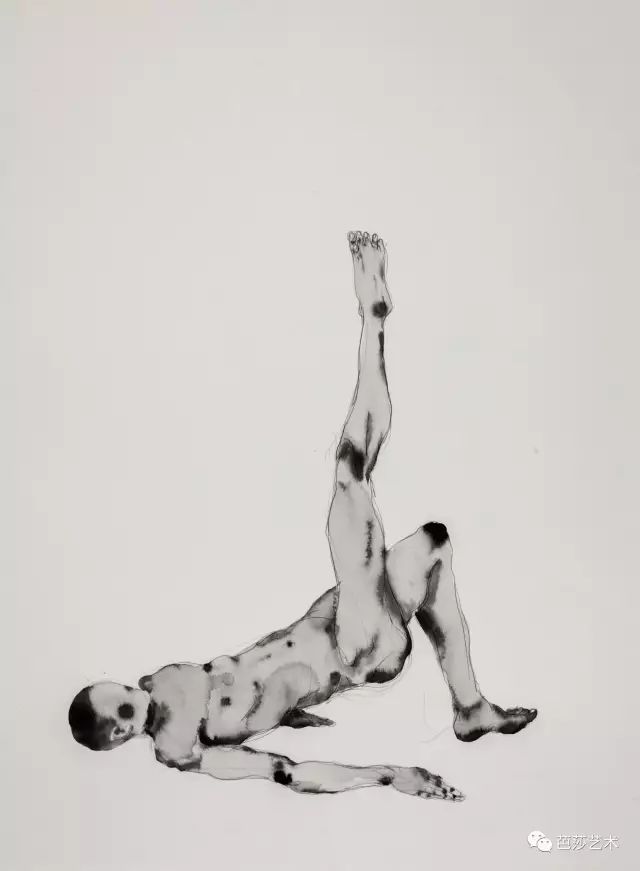
Zhou Meng "Anchor (top)", paper, acrylic, 76.2×55.9cm, 2015
It is ineffable and untransmissible,
returning to a state more fundamental than thought and language.
In creation,
I hope to return,
removing the fixed thinking of division,
transforming into an overall state of feeling.
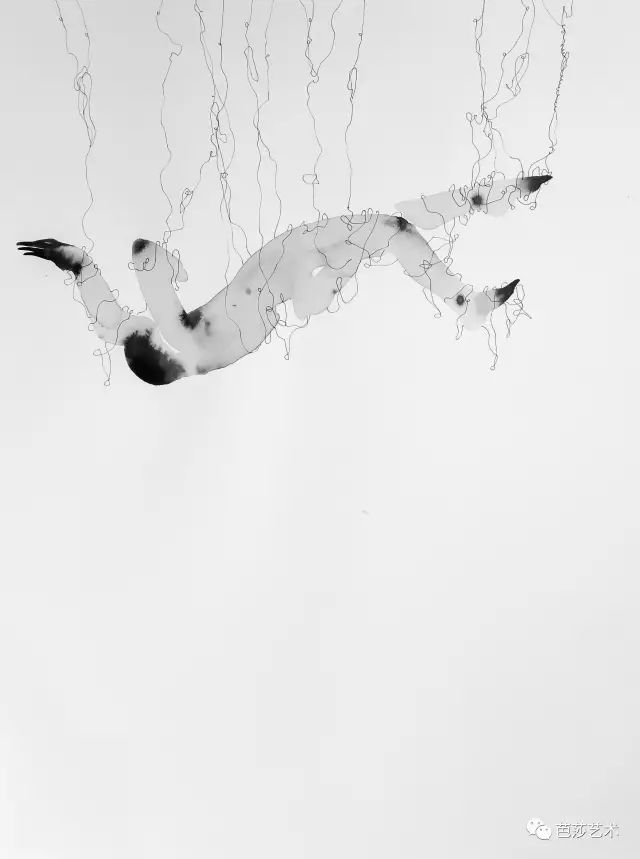
Zhou Meng "FL", paper, acrylic, 61×46cm, 2016
Bazaar: Although your works depict static bodies, the images convey a sense of rhythm.
How do you understand the storytelling in static images?
Zhou Meng: The image itself is a medium for constructing thought connections.
Through the audience's feelings, the expressed content forms a unique loop.
Kant mentioned distant and near feelings,
with the former being easily accepted by most,
while the latter has strong personal color.
Sensory experience is limited to individuals,
based on experience and perception.
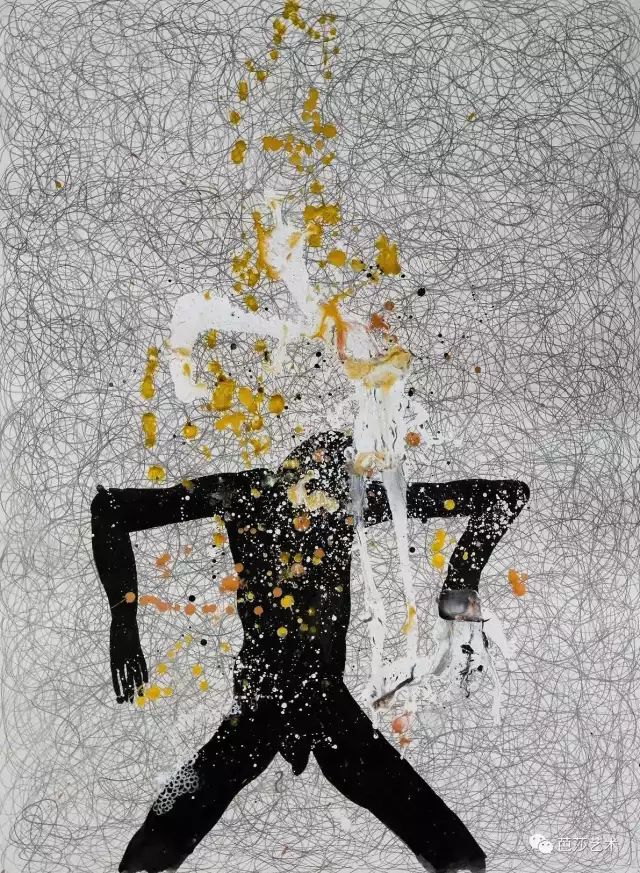
Zhou Meng "Anonym 20", mixed media, 120×100cm, 2017
I believe defined images are static;
our experiences and past feelings influence them,
forming a mental inertia that creates dynamics in the image.
My works inspire shared emotional stories,
generating so-called resonance.
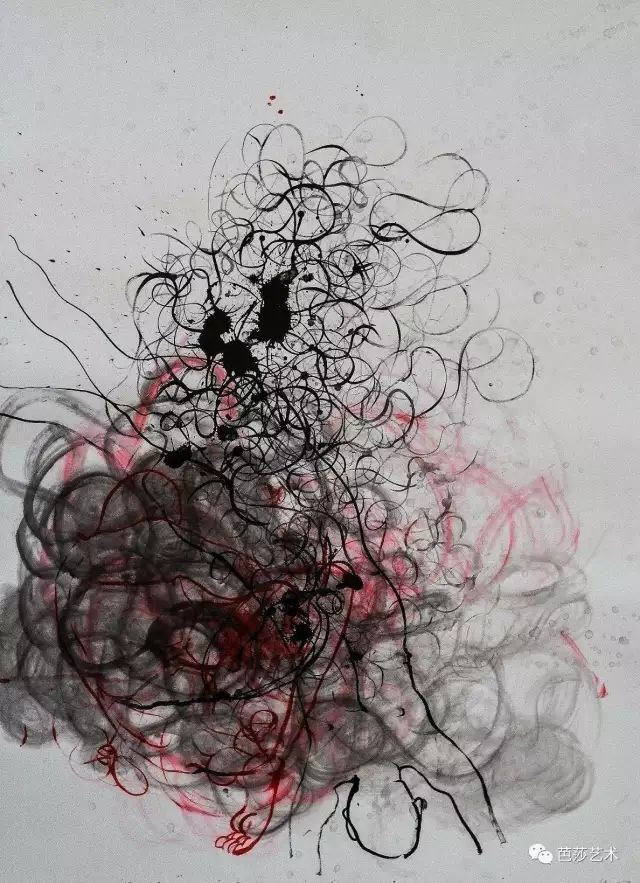
Zhou Meng "Anonym 16", mixed media, 150×120cm, 2017
Bazaar: How do these illusory characters and spaces relate to you personally?
What part of yourself do they reflect?
Zhou Meng: Works created with heart are extensions of the artist.
The main characters and bodies showcased are my imagined derivatives,
possibly embodying countless passersby.
From a psychological perspective, these are later phenomena of childhood experiences,
with some loneliness stemming from being the only child in the family.
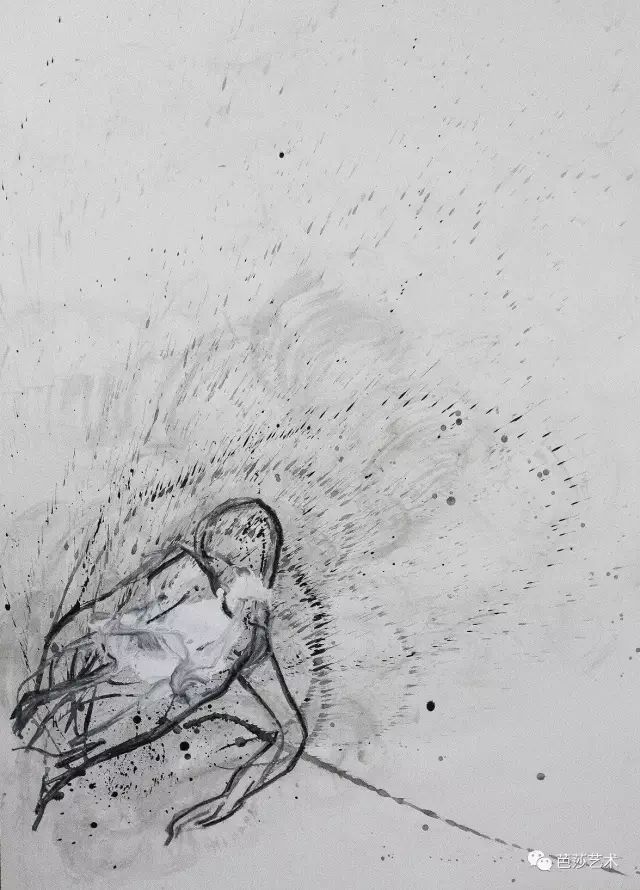
Zhou Meng "Anonym 27", mixed media, 150×120cm, 2017
Bazaar: Most of your flat works are presented in "ink wash" form.
How do you select colors and black-and-white?
Zhou Meng: I always believe ink wash itself is culture,
and the essence of culture is to return to humanity.
While inheriting tradition,
I need to understand myself and the surrounding societal changes and developments further.
For me, painting is humanity.
I like the unrestricted, simple temperament brought by ink wash,
with a picture completed in one go, free of superfluous emotions.
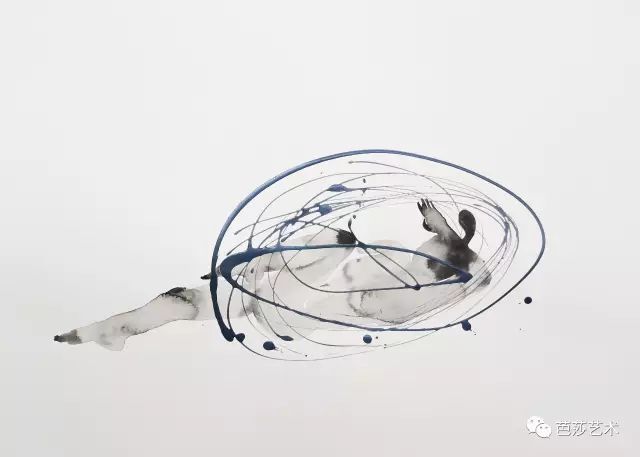
Zhou Meng "SI 7", mixed media, 2016
Bazaar: How does exposure to different cultures during travel and studying abroad help your creation?
Zhou Meng: Different stages of enlightenment during my study periods have had the most significant impact.
From New York to London, transitioning from design to pure art,
it has been an experience of "seeing the world with open eyes,"
making creation a form of self-cultivation.
Just like "orange in the south, bitter orange in the north,"
these different conditions and experiences are reflected in the works,
both explicitly and implicitly.
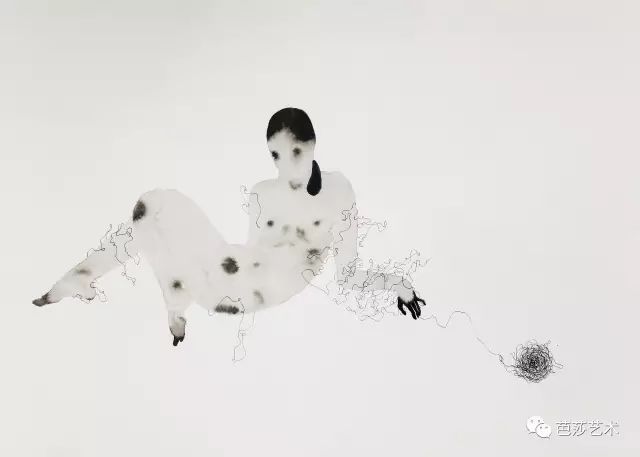
Zhou Meng "VVS2", mixed media, 2016
Bazaar: When depicting dancing bodies, you still need to capture a certain posture.
What elements determine the depiction of a particular movement?
Zhou Meng: To find inspiration, I once attended a few introductory modern dance classes
where the teacher asked me to walk in the dark with eyes closed,
feeling joint friction and muscle release and contraction.
Then I used gravity to let my body naturally fall and roll, which left a deep impression.
In creation, I extend some sensory states,
then embody the limbs,
choosing the perspective that best presents the effect on the plane.
Planning / Qi Chao
Editor, Interview, Content / Zhang Yifan